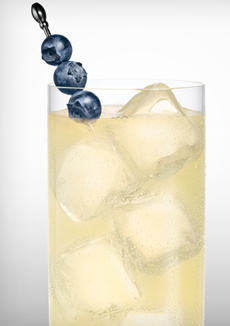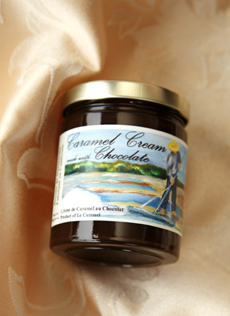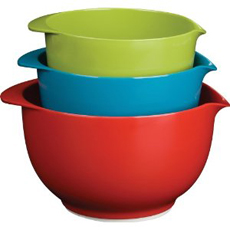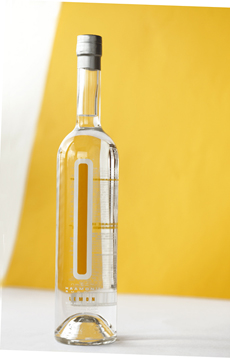
A meat thermometer takes the guesswork
out of cooking. Photo courtesy Polder. |
|
You don’t have a meat thermometer? How do you know when the meat is cooked?
One technique, used by many, is the cut-and-view approach, slicing into the meat to see the color of the inside. This is a bad idea: It ensures that valuable juices dribble out from the cut mark.
Other people use the chef-honed technique of pressing a finger on the meat to discern the degree of doneness. This works with pan-cooked meat, but this doesn’t work with chicken or oven roasts.
That’s why good cooks rely on a meat thermometer (not an oven thermometer, which is to ascertain the exact temperature in the oven since oven dials are often inaccurate). It can also be used to check the temperature of other dishes, such as eggs and casseroles. |
| (For deep-frying or candy/sugar work, you’ll need a separate candy thermometer. Not only does it measure higher temperatures, but it’s more sensitive to gradations: sugar and fat get hot more quickly than meat.)
For not very much money, a meat thermometer takes the guesswork out of cooking. It provides critical information that cooks food to a safe temperature and prevents overcooking.
What type of meat thermometer do you need?
- Basic Oven-Proof Thermometer. For under $10.00 you can buy a basic meat thermometer, like the classic from Taylor. It’s not digital, but you don’t need to know that your meat is, for example, 160.4 degrees versus 158 degrees. It is inserted into the food at the beginning of cooking. If you forget, you can insert it toward the end of cooking and wait half a minute for the dial to adjust.
- Digital Thermometer. (Photo at top left.) For twice the price, the digital Polder Classic Cooking Thermometer has a timer that can be used separately (as a general kitchen timer), shows temperatures in both Farenheit and Celsius, lets you set a five-minute alarm prior to the end of cooking and has magnets for mounting on the side of the oven. There are varieties that can be inserted into the meat when you want a quick read, as well as those that get inserted at the beginning and remain throughout the cooking process.
- Microwave Thermometer. Do you cook meat in the microwave? There are microwave-safe thermometers for you.
Pop-Up Thermometers. Developed for roasting whole poultry, these are no-brainers. When the chicken or turkey is ready, the top pops up. You can buy a package that will last a year for a little more than $10.00.
Using A Standard Meat Thermometer
1. Insert the thermometer deeply into the flesh. Make sure the thermometer does not touch any bone.
2. Place the meat and thermometer into a preheated oven. About 15 minutes before the end of the stated cooking time, check the thermometer. Then, monitor it until it reaches the desired level of doneness. (If you are pan-cooking, you can insert the thermometer toward the end, but an instant-read thermometer is a better tool.)
TIP #2: Don’t slice the meat or poultry the moment you take it from the heat. Let it sit for 10 minutes. This lets the juices settle so that, upon slicing, they don’t rush out. Whether oven- or pan-cooked, the temperature of the meat will increase by 10 degrees or so as the meat rests, so you’ll want to stop cooking 10 degrees before the recommended “done” temperature. |




